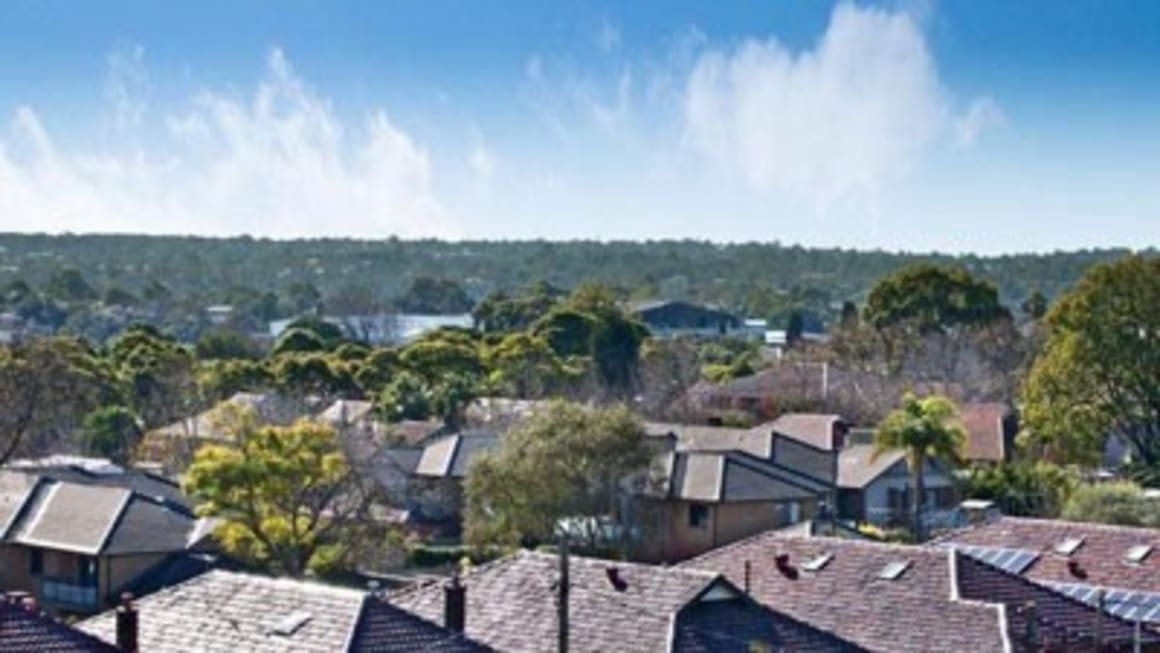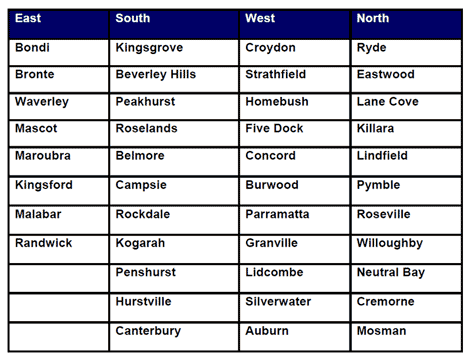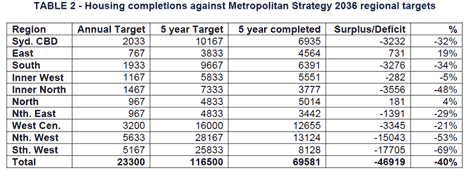‘Militant NIMBYism’ from Mosman to Bondi ruining development of Sydney housing market: McKell Institute's 41-suburb hit list

The megaphone should be taken away from “narrow-minded, self-interested individuals” who oppose the building of new homes in their Sydney suburbs, says think-tank the McKell Institute.
In a paper submitted to the NSW government, the institute supports Planning Minister Brad Hazzard’s vision of a return to terrace housing in Sydney.
The institute says there are 41 suburbs that are “ripe for a terrace revolution” and could incorporate terraces into their communities effectively.
The list of 41 suburbs includes million-dollar locations like Neutral Bay, Cremorne and Mosman on the north shore and Bondi and Bronte in the eastern suburbs.
Sydney suburbs that should return to the terrace
Click to enlargeBut the not-for-profit institute warns that “vested interests” are standing in the way of much-needed new housing projects in these Sydney suburbs.
“The era of militant Not in My Backyard (NIMBY) resistance to new housing must come to an end,” write authors of the McKell submission Tim Williams, Sean Macken and Peter Bentley.
“The current planning system has placed too much emphasis on mitigating the local impacts of new housing development and less on the state and regional importance of providing homes for people,” they say.
“These vested interest groups have been given a megaphone through our planning system while the hundreds of thousands of Sydney residents struggling to enter the housing market or simply meet their rental payments are denied a voice.
“This is unacceptable.”
“Whether it is north shore residents in Ku-ring-gai opposing new housing along their railway corridor or inner-west residents in Balmain seeking to stop 300 new homes proposed on a major arterial road, the battle cry of ‘Not in My Backyard’ can be heard echoing throughout Sydney’s town halls, community centres and local cafes,” the McKell Institute goes onto say.
The institute concedes that some proposed new housing in Sydney is opposed based on “genuine environmental concerns” but says objections “often have far less to do with protecting the local environment then they do with protecting a cloistered group of residents’ property prices or views”.
“Residents’ action groups in Sydney have reached levels of previously unseen coordination and efficiency in recent years. Their ability to quickly mobilise a crowd to heckle from the gallery at a council meeting or blanket a suburb with erroneous claims of a neighbourhood’s demise if a new housing proposal goes ahead is impressive, but disastrous for sensible housing policy,” says the institute.
In its submission it claims that while greenfield developments face the challenges of building and funding new infrastructure including water, sewerage, electricity, gas, roads, transport links, community infrastructure and amenities, on top of planning and rezoning challenges, infill developments only face planning and rezoning challenges.
It also notes that there is already a move towards more terrace housing living as found in the 2011 census, with terraces and townhouses making up 12.8% of housing stock and the percentage of detached houses falling from 60.9% to 58.9% since 2006.
It claims that the “seemingly endless opposition to infill development” is one of the key drivers in Sydney failing to build the number of homes we need in existing suburbs. At a macro level this drives up the price of homes and rental costs and denies the next generation of Sydneysiders the ability to own their own home.
The report notes that areas like the inner north and Sydney City have failed to come even close to meeting their modest targets for infill development.
Click to enlarge“This is in small part due to local councils and local residents in these regions opposing and delaying infill development,” says the McKell report.
The institute says “drastic action” must be taken to fix Sydney’s housing crisis.
“For the past three decades NSW has lacked a coherent housing policy and what policies it has had to support housing has been inconsistent and contradictory.
“Bad housing policy is bad social policy, as Sydney residents are forced to pay higher prices to either rent a home or own their own home.
“Sydney’s average house price is now $641,000 compared to Melbourne’s average price of $529,000,” says the McKell report.
The McKell Institute believes 35,000 new homes must be built each year within the Sydney region in order to meet demand – compared to the annual target of 23,000 agreed to in 2010 in the NSW government metropolitan srategy for 2036.
The NSW government discussion paper Sydney over the next 20 years forecasts that Sydney will have 1.4 million more people by 2036 and will need 570,000 more homes than are currently standing.
For more on Sydney's present and future download our free eBook.

